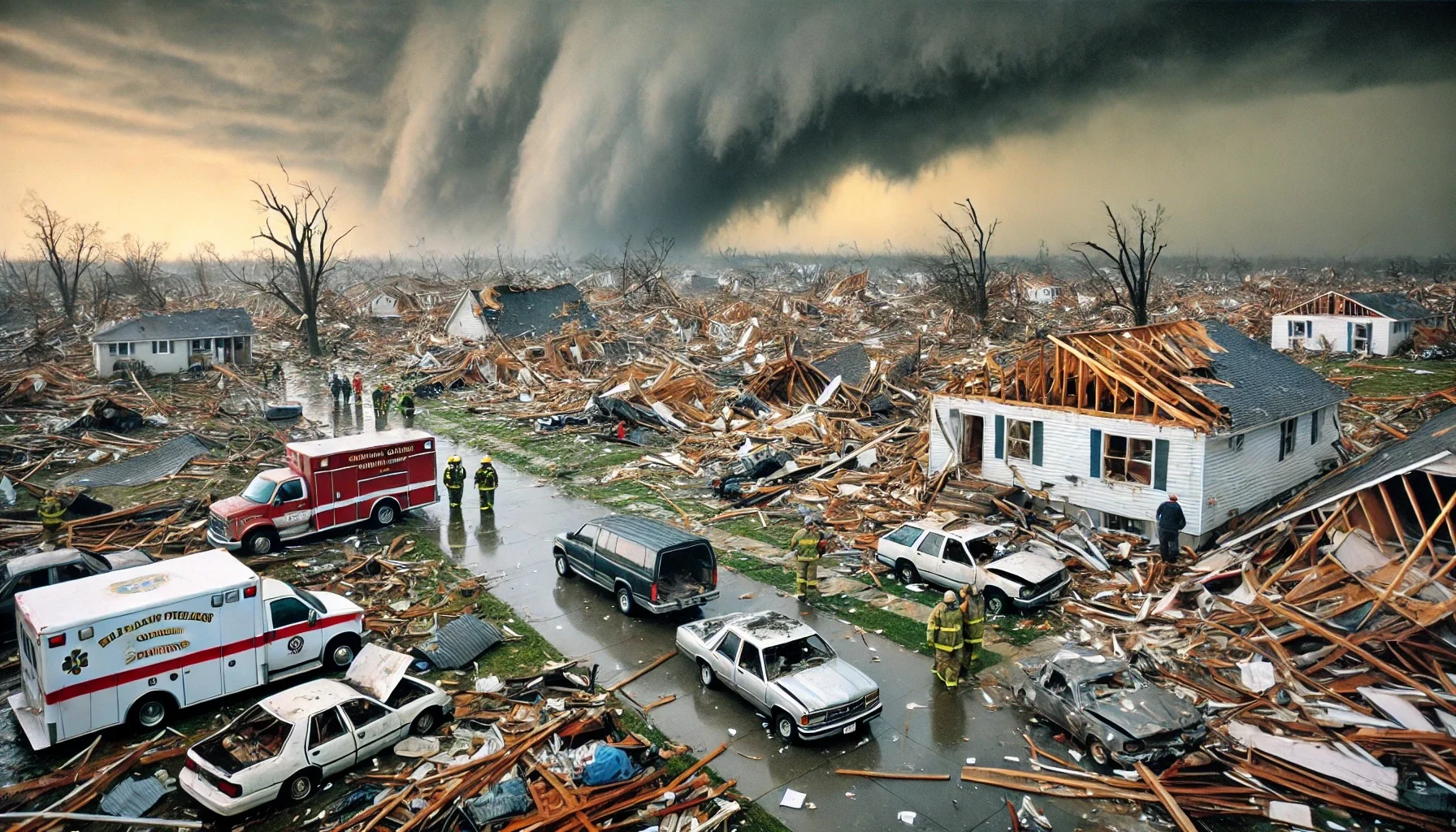
The 1990 Plainfield Tornado
by: The Calamity Calendar Team
August 28, 1990
A Day Like Any Other
August 28, 1990, began as a typical late summer day in Plainfield, Illinois. The air was thick with humidity, and the sun beat down relentlessly as the residents went about their daily routines. But unbeknownst to them, conditions were quietly brewing for one of the most destructive tornadoes in Illinois history.
In the Midwest, summer storms were not uncommon, but on that fateful day, the atmosphere was charged with more than just heat. A powerful cold front was moving in, clashing with the warm, moist air. The skies darkened, and by mid-afternoon, the stage was set for a catastrophic event that would change Plainfield forever.
A Tornado Like No Other
At approximately 3:15 PM CDT, a massive funnel cloud began to descend near the outskirts of Plainfield. The tornado touched down with little warning, and within minutes, it intensified into an F5, the most powerful category on the Fujita scale. Winds reached over 200 miles per hour as the tornado carved a path of destruction directly through the heart of the town.
Residents had no time to react. The tornado struck Plainfield with terrifying speed and force, flattening homes, tearing up trees, and hurling debris through the air like missiles. Buildings that had stood for decades were reduced to rubble in moments. Among the worst-hit areas was Plainfield Central High School, where only the fortuitous absence of students—who hadn’t yet returned for the school year—prevented even greater loss of life.
The tornado’s ferocity was unmatched. In Crest Hill and parts of Joliet, the storm continued its rampage, though slightly weakened. But in Plainfield, the damage was absolute. Streets were unrecognizable, buried under piles of twisted metal, shattered glass, and uprooted trees.
Lives Lost and a Town Shattered
When the winds finally subsided, the true extent of the disaster became apparent. Twenty-nine lives were lost that day, most of them in Plainfield, where the tornado had hit hardest. Over 350 people were injured, many seriously. The toll on the community was devastating. Families were torn apart, homes destroyed, and the sense of security that had once defined the small town was shattered.
Thanks for subscribing!
Among the stories of loss were tales of survival and heroism. Emergency responders, many of them local residents themselves, worked tirelessly to rescue the trapped and tend to the injured. The National Guard was called in to assist with the overwhelming task of clearing the wreckage and maintaining order. In the days and weeks that followed, the people of Plainfield began the long and painful process of rebuilding—not just their homes, but their lives.
A Wake-Up Call for Tornado Preparedness
The Plainfield tornado caught everyone by surprise, and it was a grim reminder of the unpredictability of nature. At the time, meteorologists and weather systems were not as advanced as today, and the tornado formed so rapidly that no warning was issued. This lack of warning played a significant role in the high casualty rate, sparking widespread criticism and calls for better preparedness.
In the aftermath, significant changes were made to how severe weather is monitored and reported. The National Weather Service enhanced its radar capabilities and developed more accurate forecasting methods to prevent a similar tragedy. Tornado preparedness became a priority, not just in Illinois, but across the country. Communities learned the importance of having a plan in place, and public education campaigns were launched to teach residents what to do in the event of a tornado.
The Legacy of the Plainfield Tornado
The Plainfield tornado remains a haunting memory for those who lived through it and a sobering lesson in the power of nature. It stands as the only F5 tornado ever recorded in the Chicago metropolitan area, and its impact is still felt in the region today.
In the years since, the town of Plainfield has rebuilt and grown, but the scars of that day are still visible. Memorials have been erected to honor those who lost their lives, and the stories of survival and loss are passed down through generations. The tornado has become a part of Plainfield’s history—a reminder of both the fragility of life and the resilience of the human spirit.
Today, the advancements in meteorology and tornado detection are a testament to the lessons learned from that tragic day. While we cannot control the weather, we can be better prepared, and the legacy of the Plainfield tornado lives on in the continued efforts to protect lives and communities from the wrath of nature.
Stay in the Loop!
Become a Calamity Insider and get exclusive Calamity Calendar updates delivered straight to your inbox.
Thanks! You're now subscribed.